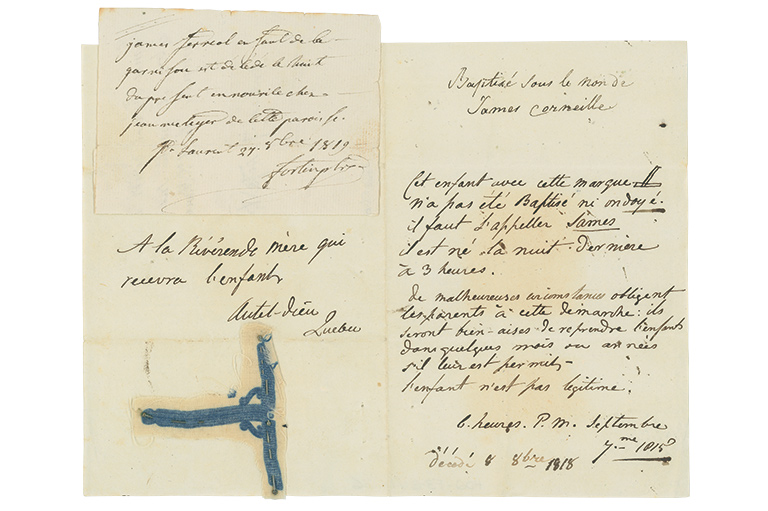Happily Hooked
It’s art born of practicality; beauty born of thrift. Our skilled foremothers hooked rugs, just as they quilted—not as a leisure activity but to use up bits of cloth to make something useful, transforming rags into masterpieces in the process. Home Economics: 150 Years of Canadian Hooked Rugs at the Textile Museum of Canada in Toronto showcases about 100 rugs from the museum’s huge collection.
-
 Hooked Rug, Designed by Clarence Gagnon, Baie St. Paul, Quebec, Canada, 1926-1930, 99 cmx x70cm, Gift of Heather and Bryan Ayer, T03.14.1Courtesy of the Textile Museum of Canada
Hooked Rug, Designed by Clarence Gagnon, Baie St. Paul, Quebec, Canada, 1926-1930, 99 cmx x70cm, Gift of Heather and Bryan Ayer, T03.14.1Courtesy of the Textile Museum of Canada -
 Hooked Rug, Grenfell Mission, Newfoundland & Labrador, Canada, c. 1940, 33.5 cm x 45 cm, Gift of Heather Bryan, T00.49.1Courtesy of the Textile Museum of Canada
Hooked Rug, Grenfell Mission, Newfoundland & Labrador, Canada, c. 1940, 33.5 cm x 45 cm, Gift of Heather Bryan, T00.49.1Courtesy of the Textile Museum of Canada -
 Barbara Klunder, Toronto, Ontario, Laura Secord, 1989, Wool, burlap, hooked, 100 x 190 cm.Collection of the Artist
Barbara Klunder, Toronto, Ontario, Laura Secord, 1989, Wool, burlap, hooked, 100 x 190 cm.Collection of the Artist -
 Barbara Klunder, Toronto, Ontario, Laura Secord, 1989, Wool, burlap, hooked, 100 x 190 cm.Collection of the Artist
Barbara Klunder, Toronto, Ontario, Laura Secord, 1989, Wool, burlap, hooked, 100 x 190 cm.Collection of the Artist -
 Hooked Rug, Canada, c. 1969, 92 x 83 cm T77.0054Courtesy of the Textile Museum of Canada
Hooked Rug, Canada, c. 1969, 92 x 83 cm T77.0054Courtesy of the Textile Museum of Canada -
 Hooked Rug, Lunenberg, Nova Scotia, Canada, c. 1950, 90 x 74 cm, From the Opekar/Webster Collection, T94.0357Courtesy of the Textile Museum of Canada
Hooked Rug, Lunenberg, Nova Scotia, Canada, c. 1950, 90 x 74 cm, From the Opekar/Webster Collection, T94.0357Courtesy of the Textile Museum of Canada
The rugs range from painterly compositions sold to tourists in Quebec, created using patterns depicting nature or scenes of country life; to simple stylized flowers; to funky modern art. And “art” feels like the proper word to use when you walk through the galleries hung with these striking works. They reminded of the saying that when men create something beautiful, it’s art; when women do so, it’s craft.
I remember my stolid grandmother with a large wooden frame set up in her farmhouse sitting room, a burlap sack stretched across it through which she steadily pulled a narrow ribbon of fabric into short, even loops. Rugs of this kind abound at the exhibition; I was grateful that, unlike the ones my grandmother made, they were preserved rather than destroyed through—as intended—heavy use.
Particularly fascinating are the tightly hooked mats made in the early 1900s after William Grenfell and American Jessie Luther introduced them as a way to generate income in a region of Newfoundland ground down by poverty [ ] . Workers were given kits containing the burlap backing and fabric, at first strips of cloth but later dyed silk stockings that allowed for especially short loops and compact mats.
Other highlights include the geometric First Nations patterns hooked on the Standing Buffalo Reserve in Saskatchewan, the myriad rugs created to mark special occasions, and the distinctive mirrored bird design hooked by none other than Emily Carr.
The modern pieces are by turns beautiful, playful and thought-provoking. Yvonne Mulock’s “Hit and Miss” cleverly celebrates the bright multi-hued rugs created to use up bits and pieces of scrap fabric. But of course, as the editor of a history magazine, I was particularly taken with Barbara Klunder’s rendering of Laura Secord and her apocryphal cow.
We hope you’ll help us continue to share fascinating stories about Canada’s past by making a donation to Canada’s History Society today.
We highlight our nation’s diverse past by telling stories that illuminate the people, places, and events that unite us as Canadians, and by making those stories accessible to everyone through our free online content.
We are a registered charity that depends on contributions from readers like you to share inspiring and informative stories with students and citizens of all ages — award-winning stories written by Canada’s top historians, authors, journalists, and history enthusiasts.
Any amount helps, or better yet, start a monthly donation today. Your support makes all the difference. Thank you!
Themes associated with this article
Advertisement
With 7 uniquely curated newsletters to choose from, we have something for everyone.




